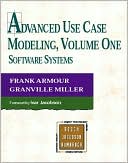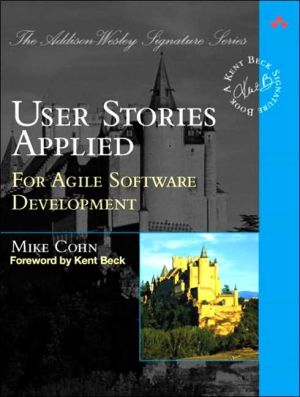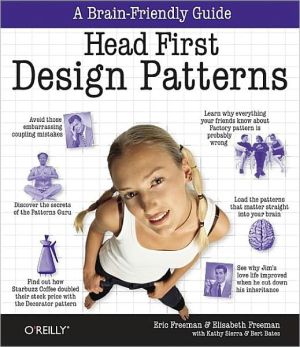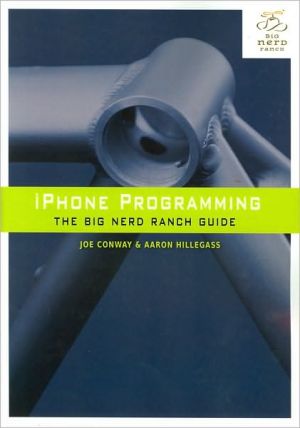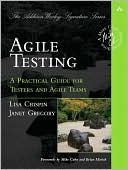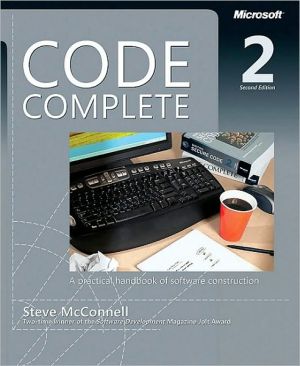Advanced Use Case Modeling: Software Systems, Vol. 1
Search in google:
"This book isn't just another introduction to use cases. The authors have used their wealth of experience to produce an excellent and insightful collection of detailed examples, explanations, and advice on how to work with use cases." —Maria EricssonThe toughest challenge in building a software system that meets the needs of your audience lies in clearly understanding the problems that the system must solve. Advanced Use Case Modeling presents a framework for discovering, identifying, and modeling the problem that the software system will ultimately solve.Software developers often employ use cases to specify what should be performed by the system they're constructing. Although use case-driven analysis, design, and testing of software systems has become increasingly popular, little has been written on the role of use cases in the complete software cycle. This book fills that need by describing how to create use case models for complex software development projects, using practical examples to explain conceptual information.The authors extend the work of software visionary Ivar Jacobson, using the Unified Modeling Language (UML) as the notation to describe the book's models. Aimed primarily at software professionals, Advanced Use Case Modeling also includes information that relates use case technique to business processes.This book presents a process for creating and maintaining use case models in a framework that can be fully customized for your organization. The authors, pioneers in the application of use cases in software development, bring their extensive experience to cover topics such as: A process model for applying a use case model How to keep your use case modeling effort on track Tips and pitfalls in use case modeling How to organize your use case model for large-system development Similarities between Advanced Use Case Modeling and the Rational Unified Process framework Effect of use cases on user interface design Guidelines for quality use case modeling Booknews Presents a framework for discovering, identifying, and modeling the tasks that a software system is attempting to perform. Using the unified modeling language as the notation for their models, the authors explain advanced use case modeling concepts, describe a process for implementing use case modeling, and discuss various use case modeling issues as they apply to the complete software cycle. Annotation c. Book News, Inc., Portland, OR (booknews.com)
ForewordxiiiPrefacexvIntroductionxxvPart 1Fundamentals1Chapter 1Actors5What Is an Actor?6Why Define Actors?7How to Find the Actors8Primary and Secondary Actor Types9Actor Personalities11Abstract Actors15Actor Notation16Conclusion16Chapter 2Use Cases19Finding Use Cases20Describing Use Case22Refactoring the Use Case Model25Extending the UML Use Case Process27Organizing the Use Case Model30Another Approach to Building a Use Case Model30Conclusion32Part 2Project Initiation33Chapter 3Scoping the System: Vision Document and Business Case35Describing the Problem: Vision Document36Tackling the Dark Side36Determining Project Feasibility: Business Case39Writing the Business Case40Revising the Business Case42Conclusion43Chapter 4Balancing the Software System Use Case Model45Analyzing the Domain47Documenting the Interfaces50Defining a Software Architecture52Packaging the Architecture54Conclusion55Part 3Advanced Use Case Modeling Framework: Initial Use Case Model57Chapter 5Introduction to the System Use Case Modeling Process Framework61Need for a Software Development Process62Advanced Use Case Modeling Process Framework63Creating or Customizing a Process Framework for a Specific Project69Conclusion72Chapter 6Preparing for Use Case Modeling and Determining Use Case Approach73Perform a Stakeholder Analysis73Select and Customize a Use Case Process Framework76Select Use Case Standards, Templates, and Tools76Determine Training and Mentoring Needs77Conclusion80Chapter 7Performing Initial Use Case Modeling81Develop Context Diagram82Identify the Major Actors84Discover the Conceptual System Use Cases88Develop Initial Use Case Diagram95Determine/Refine the Conceptual Business Objects96Relationship of Use Cases and the Object Model97Packaging and Validating the Use Case Conceptual Model101Conclusion101Part 4Advanced Use Case Modeling Framework: Expanding the Use Case Model103Chapter 8Develop Base Use Case Descriptions107Fields in a Base Use Case Description109Getting Started Creating Base Use Case Descriptions127Finding New Use Cases129Conclusion134Chapter 9Elaborate the Base Use Case Description135Describing Alternative Flows136Text-Based Conditional and Iterative Logic in the Flow of Events138Using Activity Diagrams to Represent a Complex Flow of Events144Activity Diagrams versus Detailed Text150Conclusion150Chapter 10Model Extend, Include, and Generalization Relationships151Extend Relationships152Include Relationships165Generalization Relationships175Bringing Together Extend, Include, and Generalization Relationships180Conclusion182Chapter 11Add Supplemental Information to the Use Case Model183Use Case Priorities183Nonbehavioral Requirements185Interface Analysis187Focusing on Behavioral Details of Individual Use Case Activities189Documenting Details of Business Procedures and Rules190Conclusion193Chapter 12Map Use Cases to Object Models195Analysis Object Modeling196Parallel Use Case and Object Modeling199Basic CRUD Matrix201Expanded CRUD Matrix203Analysis Sequence Diagrams205Mapping Use Cases to Object Models Using Sequence Diagrams209Issues with Using Sequence Diagrams during Analysis214Conclusion215Chapter 13Develop Instance Scenarios217Use Case Instances Model Specific Executions of a Use Case218Use Cases Are to Object Classes as Use Case Instances Are to Object Instances218Why Create Use Case Instances?220Use Case Instances Can Be Applied Informally221Use Cases Can Be Applied More Formally223Layout of a Use Case Instance Description224Finding and Creating Use Case Instances224Conclusion229Chapter 14Create Test Cases and Documentation231Creating a Test Strategy232Creating a Test Plan232Elements of a Test Plan234Creating Test Cases234Testing Range/Error Handling237Testing Interactions239Creating User Documentation241Conclusion242Chapter 15Organize the Use Cases243Business Function Packages245Superordinate and Subordinate Use Cases247Dependency Streams254Activity Diagrams to Model Use Case Dependencies258Model Views261Putting It All Together in a System Use Case Model262Conclusion263Part 5Additional Topics265Chapter 16Building User Interfaces267Conceptual User Interface Design268Creating Conceptual Models from Use Cases269Physical User Interface Design279Conclusion279Chapter 17Coping with Change281Requirements Churn282Source of Change283Accelerating Change284Managing Change285Change Cases286Changes to the Use Case Model287Conclusion290Chapter 18Creating Your Advanced Use Case Modeling Process291Effect of the Project and Project Team on Ceremony292Effects of Artifacts on Ceremony293Development Case295Iterative Development and the Development Case299Conclusion299Chapter 19Ensuring a Successful Use Case Modeling Effort301Appropriate Level of Detail and Organization in the Use Case Model302Attributes of a Good Use Case Model When Specifying Requirements304Incremental and Iterative Development with Use Cases311Know When Not to Use Use Cases314Questions to Ask When Use Case Modeling315Conclusion316Appendix AUse Case Development Review Checklist317Appendix BDevelopment Case for Advanced Use Case Modeling323Appendix CSimplified Loan Processing System341Appendix DSimplified Loan Processing System User Interface Specification375Bibliography387Index399
